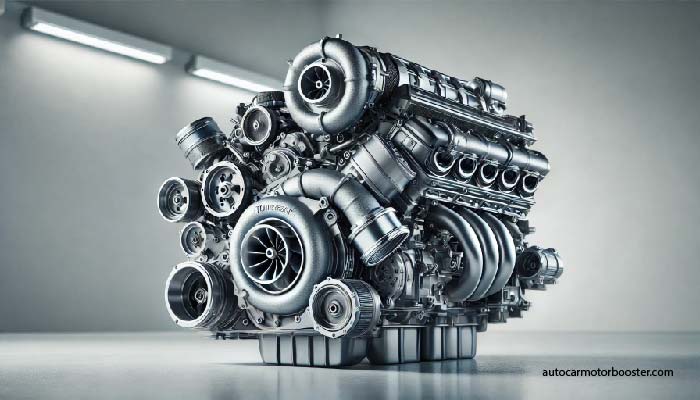Boosting technology has revolutionized the automotive industry, transforming how engines generate power and use fuel efficiently. Today, car manufacturers focus heavily on boosting technology to enhance vehicle performance without compromising fuel efficiency. Let’s explore how this technology works, its benefits, and how it impacts fuel consumption in modern vehicles.
What is Boosting Technology?
Boosting technology refers to the techniques that increase engine performance by compressing more air into the engine’s combustion chamber. More air means more fuel can burn, generating extra power. Traditionally, larger engines were needed for higher power, but boosting technology has allowed smaller engines to achieve similar, or even greater, levels of performance while consuming less fuel.
Types of Boosting Technology
- Turbocharging
Turbocharging is a widely used boosting method in vehicles. A turbocharger is a turbine-driven component that uses exhaust gases to compress air entering the engine. This compressed air helps the engine generate more power without requiring additional fuel, leading to improved fuel efficiency. - Supercharging
Supercharging, like turbocharging, is used to enhance engine power. However, unlike turbochargers, superchargers are powered directly by the engine. This immediate power boost provides quicker acceleration, though it may slightly affect fuel efficiency compared to turbocharging. - Electric Boosting
Electric boosting is an emerging technology where an electric motor helps boost engine power without relying on fuel. This technology is gaining popularity in hybrid and electric vehicles, where fuel efficiency is a priority. Electric boosting combines fuel economy with excellent performance, creating an eco-friendly alternative to traditional boosting methods.
How Boosting Technology Improves Fuel Efficiency
Boosting technology enables smaller engines to produce high power, which traditionally required larger, fuel-intensive engines. This “downsizing” trend reduces fuel consumption by minimizing engine size without compromising performance. For instance, a turbocharged four-cylinder engine can achieve the power of a traditional six-cylinder engine while using less fuel.
Moreover, electric boosting, as seen in hybrid vehicles, enables optimal fuel use by reducing reliance on the internal combustion engine. By switching to electric power during low-demand situations, the vehicle conserves fuel, thus improving overall fuel efficiency.
The Environmental Impact of Boosting Technology
Boosting technology benefits not only drivers but also the environment. Improved fuel efficiency directly translates to reduced emissions. Smaller engines release fewer pollutants, which aligns with the global push for cleaner and more eco-friendly automotive solutions. This makes boosting technology a key player in creating a more sustainable future.
Advantages of Boosting Technology
- Enhanced Performance: Boosting technology improves acceleration, power output, and overall engine performance.
- Fuel Efficiency: Downsized engines use less fuel while delivering similar power to larger engines, contributing to better fuel economy.
- Eco-Friendliness: Boosted engines emit fewer pollutants, supporting environmentally friendly driving.
- Cost Savings: Reduced fuel consumption leads to cost savings over time, making boosting technology financially beneficial.
Challenges of Boosting Technology
While boosting technology offers numerous benefits, it also has some challenges:
- Maintenance Costs: Components like turbochargers and superchargers require regular maintenance, which can increase costs.
- Turbo Lag: In turbocharged engines, there is sometimes a delay, known as “turbo lag,” between pressing the accelerator and experiencing a boost in power.
- Complexity: Boosting systems are complex and require precise tuning to ensure efficiency and performance.
Conclusion
Boosting technology plays an essential role in modern automotive engineering, balancing power and fuel efficiency in ways previously thought impossible. By making engines smaller yet more powerful, this technology has become a game-changer for fuel-conscious drivers and manufacturers alike. As boosting technology continues to evolve, we can expect even more advanced solutions that prioritize both performance and sustainability.
FAQs
1. What is boosting technology?
Boosting technology involves techniques to increase engine power by compressing more air into the combustion chamber, allowing more fuel to burn and generate more power.
2. How does turbocharging differ from supercharging?
Turbocharging uses exhaust gases to power the boost, while supercharging relies on the engine’s power. Turbocharging is generally more fuel-efficient than supercharging.
3. Why is boosting technology important for fuel efficiency?
Boosting technology allows smaller engines to deliver high power, reducing the need for larger, fuel-intensive engines. This leads to better fuel efficiency and lower fuel costs.
4. Is electric boosting the same as hybrid technology?
Electric boosting is a component of hybrid technology, where electric motors assist the engine. It enhances fuel efficiency by reducing reliance on fuel in low-demand situations.
5. What are the main benefits of boosting technology?
Boosting technology improves engine performance, fuel efficiency, and eco-friendliness, while also offering cost savings by reducing fuel consumption.
If Like This Article Visit Our Website. Collect From Wekiapedia
